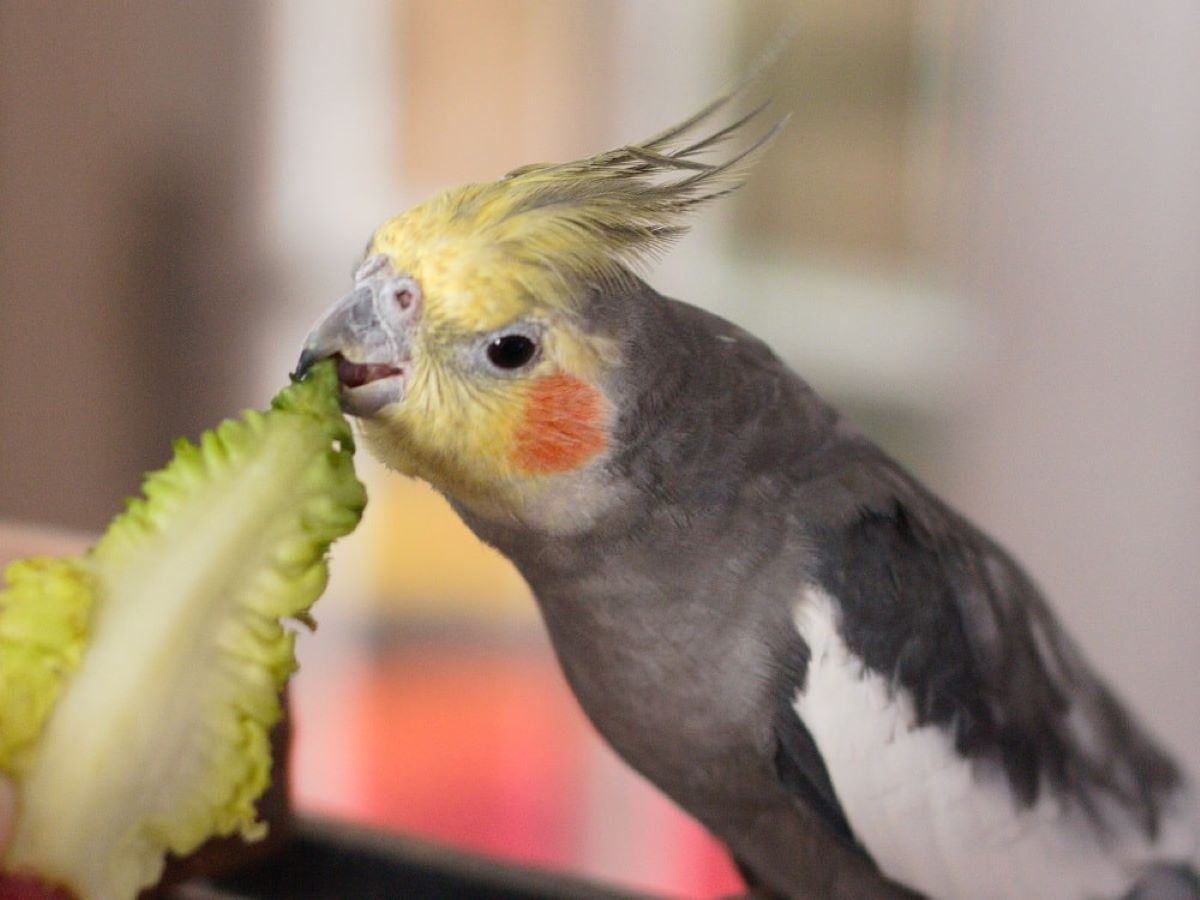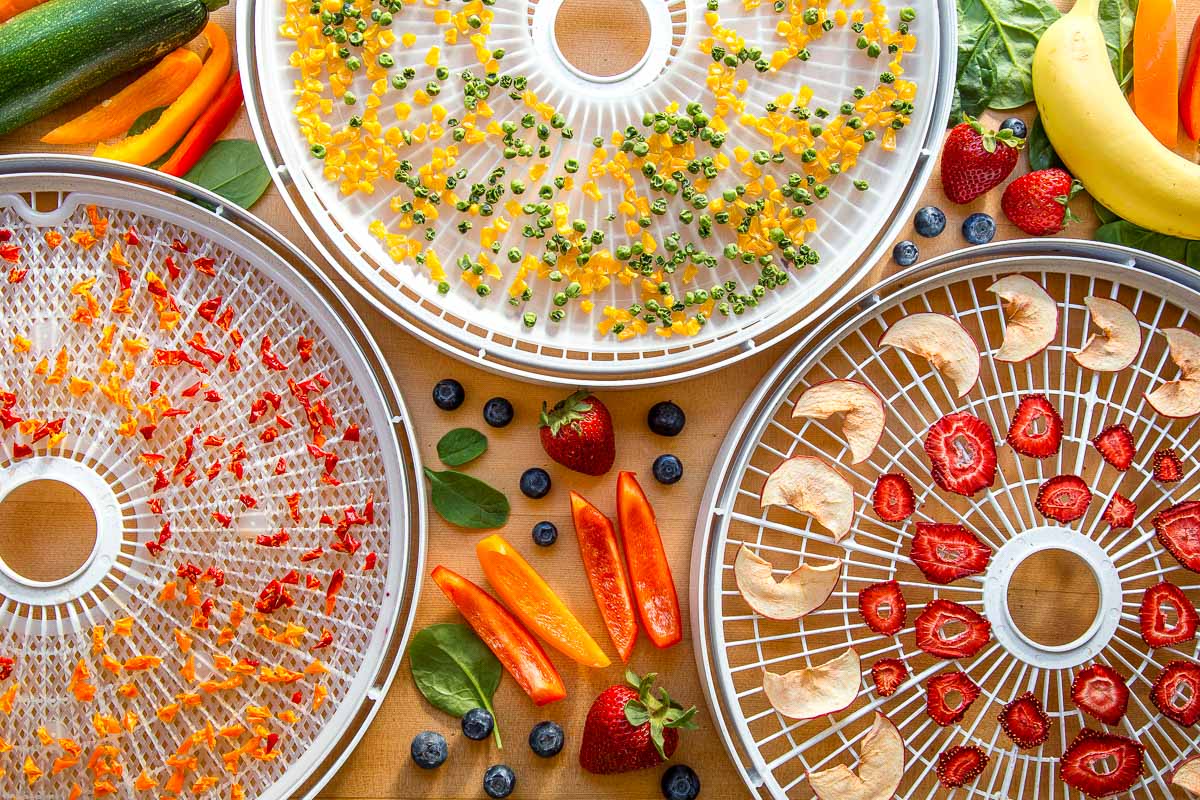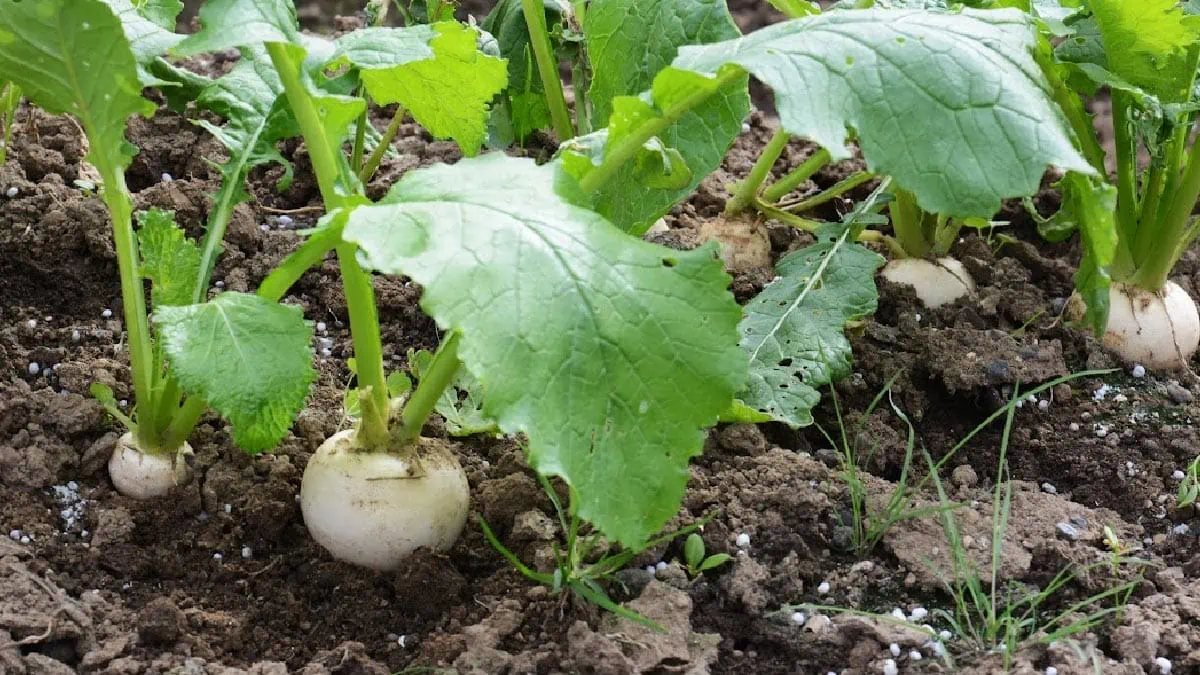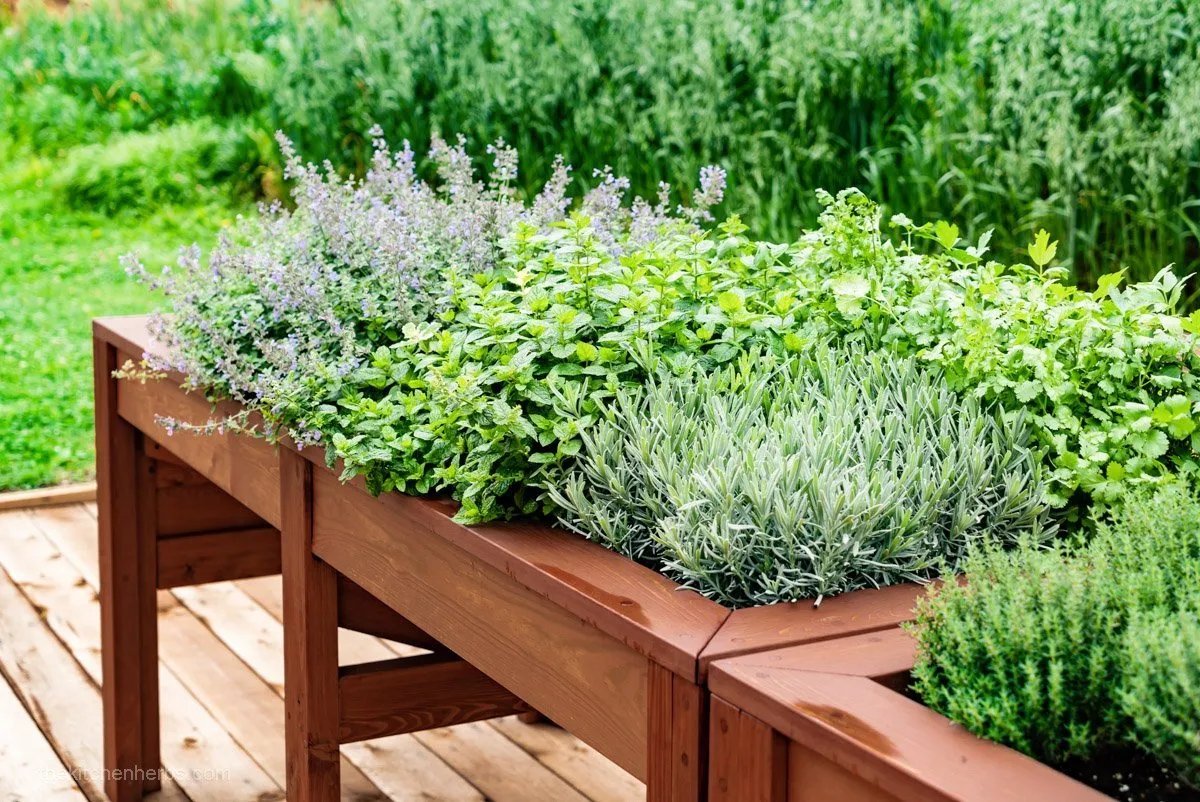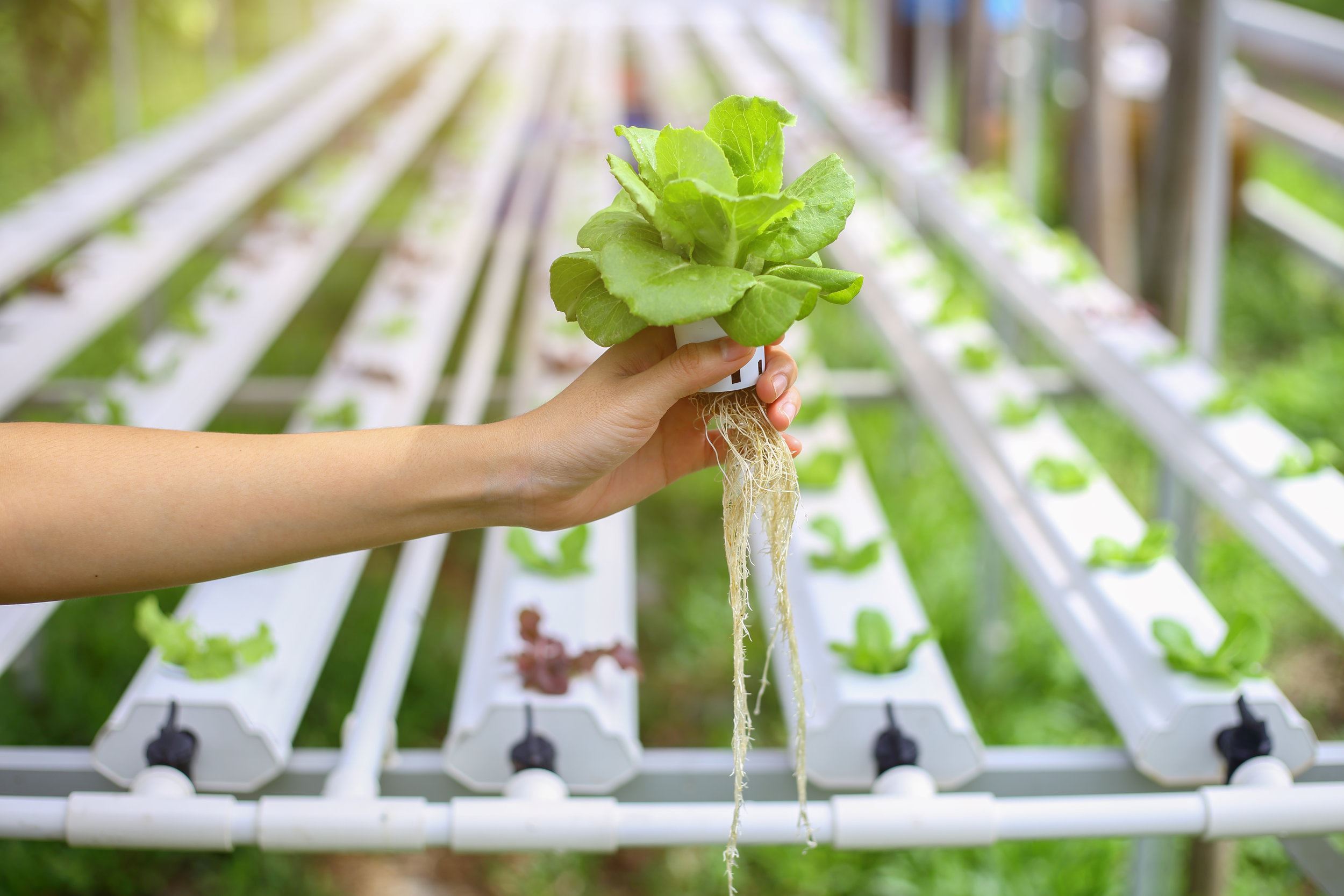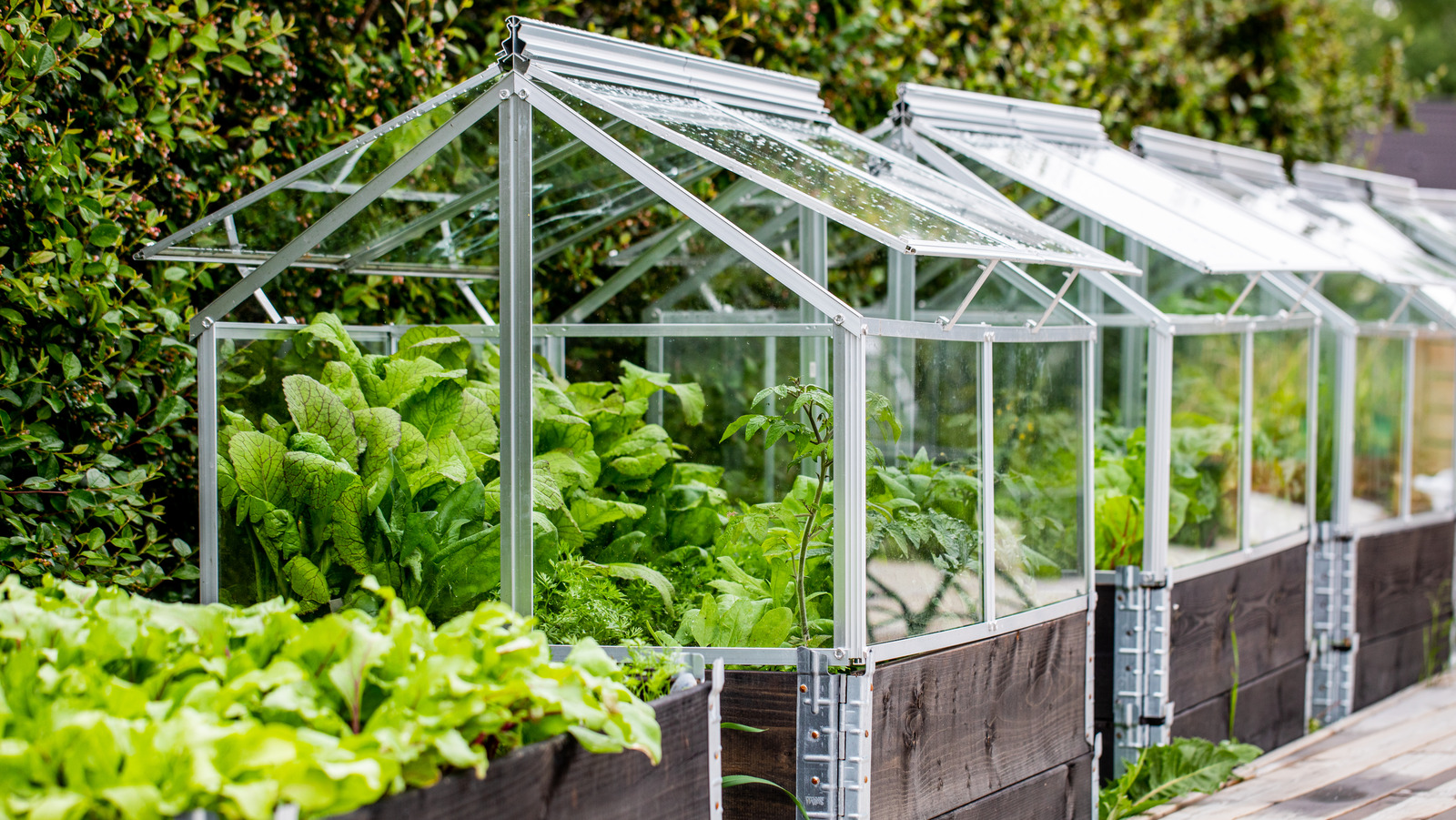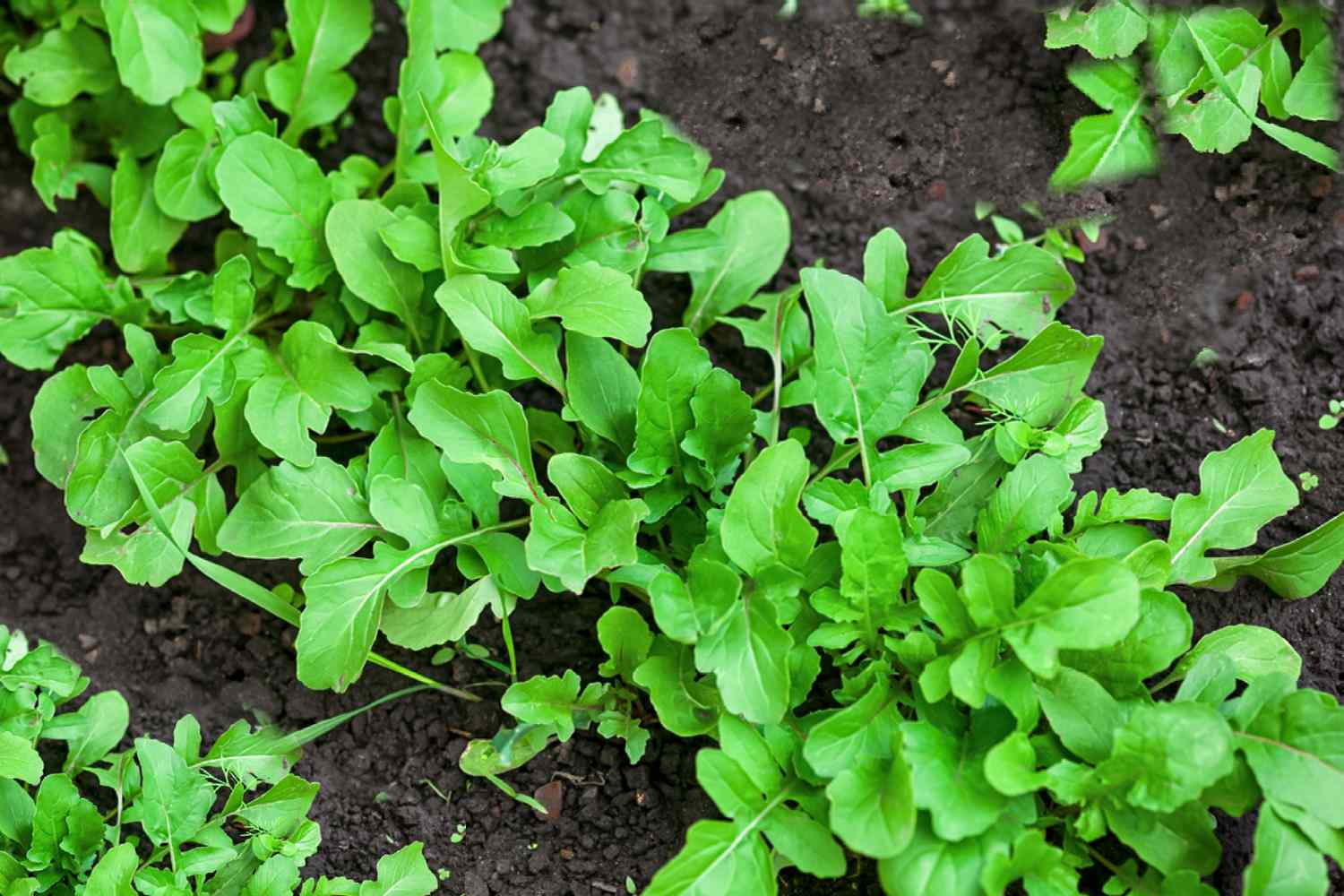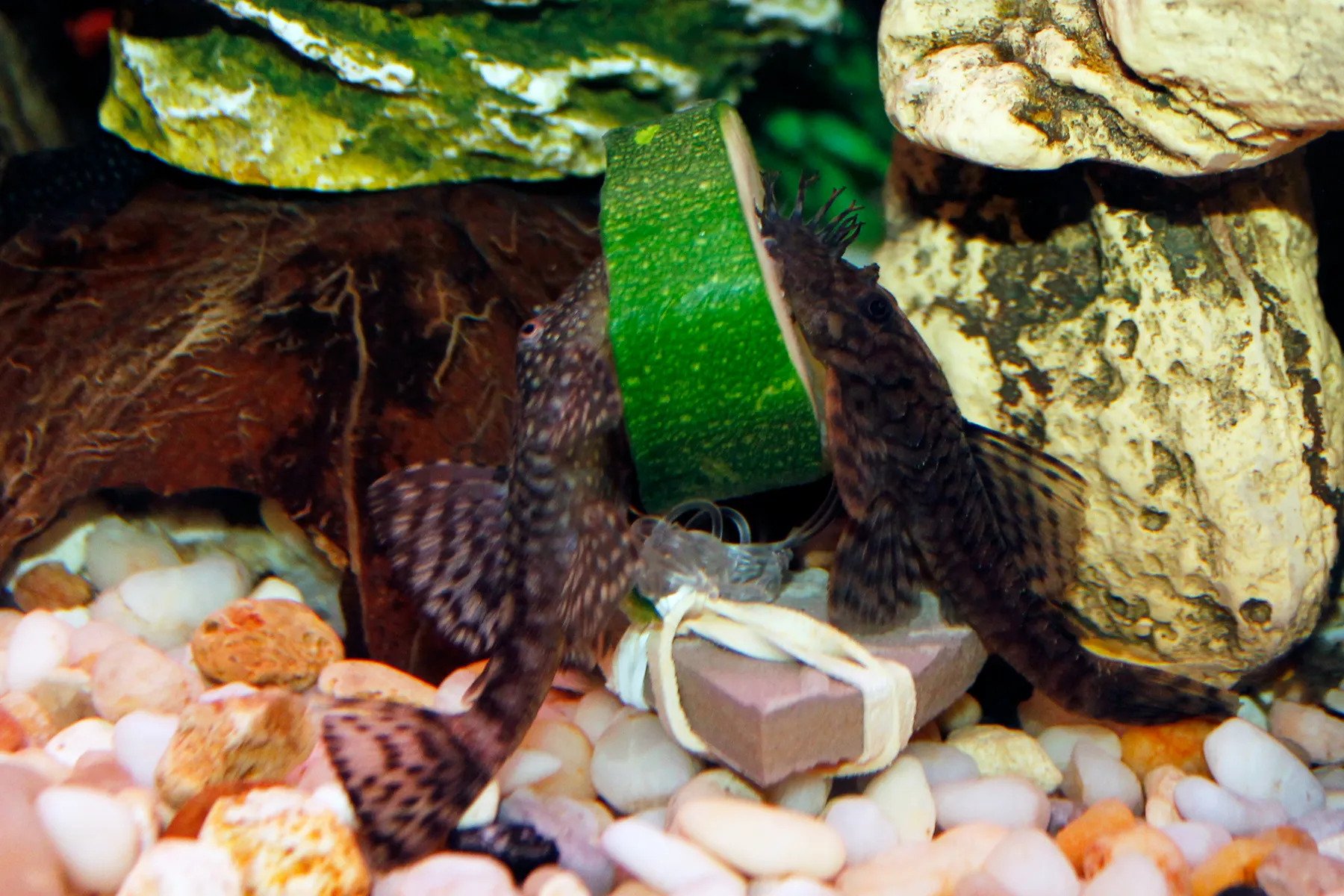Home>Types of Gardening>Edible Gardening>What Vegetables Can Grow Together
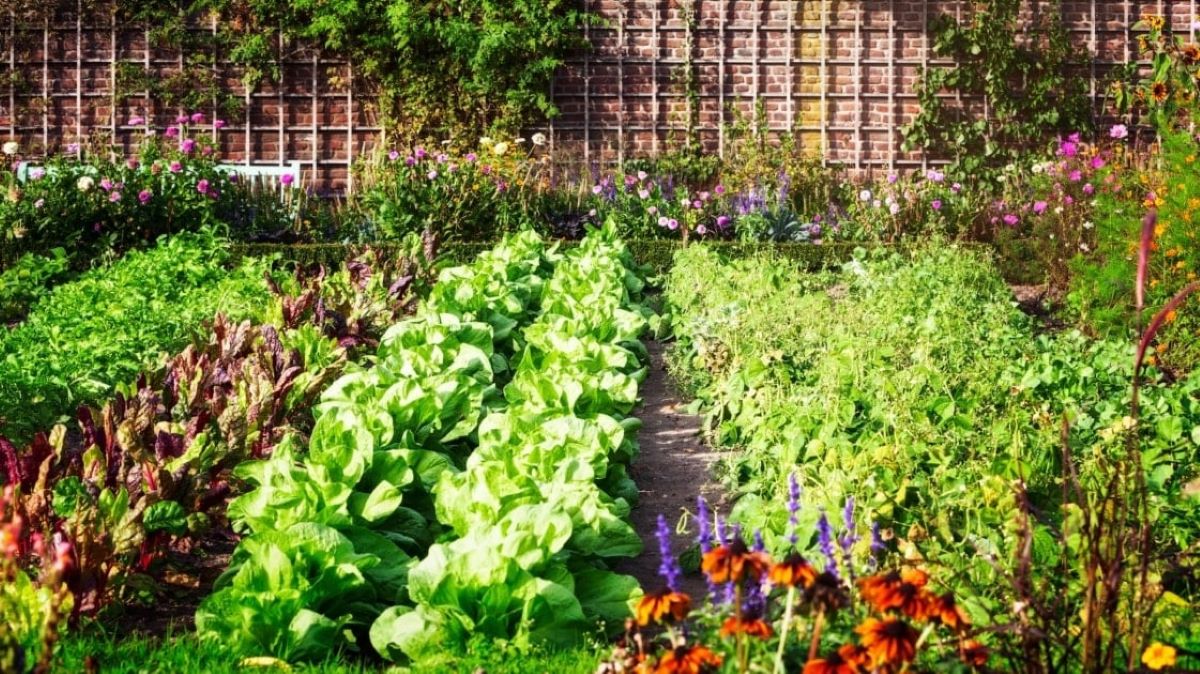

Edible Gardening
What Vegetables Can Grow Together
Modified: January 22, 2024
Discover which vegetables can be grown together in your edible garden. Plan your planting combinations for a successful and bountiful harvest.
(Many of the links in this article redirect to a specific reviewed product. Your purchase of these products through affiliate links helps to generate commission for Chicagolandgardening.com, at no extra cost. Learn more)
Table of Contents
Introduction
When it comes to edible gardening, the options are endless. From succulent tomatoes to crisp lettuce, there is a wide variety of vegetables that you can grow right in your own backyard. But have you ever wondered which vegetables can grow together harmoniously? Companion planting is a gardening technique that involves growing different plants in close proximity to benefit each other. By strategically placing compatible vegetables together, you can enhance their growth, ward off pests, and even improve the flavor of your harvest.
Companion planting is rooted in the concept of symbiosis, where plants interact and support each other in a mutually beneficial relationship. Some vegetables release natural substances that repel pests, while others attract beneficial insects or improve soil fertility. Additionally, certain vegetable combinations can help to maximize space, prevent disease, and reduce the need for chemical pesticides.
Before embarking on your companion planting journey, it is important to consider several factors. First, take into account the spatial requirements of each vegetable. Some vegetables, like sprawling pumpkins or vining tomatoes, may crowd out their neighboring plants if not given enough space. It’s crucial to plan accordingly and ensure that each plant has enough room to grow and access sunlight.
Second, consider the nutrient needs of each vegetable. Some plants are heavy feeders and require ample amounts of nitrogen, phosphorus, and potassium. By pairing them with nitrogen-fixing plants, such as legumes, you can ensure a balanced nutrient supply for all the vegetables in your garden.
Factors to Consider for Companion Planting
Companion planting involves more than just randomly placing vegetables together in the garden. To maximize the benefits and ensure successful growth, there are several factors to consider when practicing companion planting. These factors include:
- Complementary Growth Habits: Each vegetable has its own growth habit, including height, spread, and root depth. When choosing companion plants, consider their growth habits to ensure they do not compete for resources. For example, tall plants like corn can provide shade for shorter plants like lettuce or spinach, while shallow-rooted plants can be grown alongside deeply rooted plants to make efficient use of space.
- Plant Size: It’s important to match plants of similar sizes together to avoid one plant shading or overcrowding another. Planting large, bushy vegetables like squash or cucumber next to delicate crops like herbs or lettuce may lead to reduced sunlight and hinder growth.
- Complementary Nutrient Needs: Vegetables have varying nutrient requirements. Some are heavy feeders, requiring high levels of nitrogen, while others have low nutrient needs. Pairing vegetables with different nutrient requirements can help prevent nutrient depletion in the soil. For instance, planting nitrogen-fixing legumes, like beans or peas, alongside nitrogen-hungry plants, such as corn or tomatoes, can increase soil fertility.
- Pest Control: Companion planting can naturally deter pests and reduce the need for chemical pesticides. Some plants contain natural compounds that repel specific pests, while others attract beneficial insects that prey on pests. For example, planting marigolds alongside tomatoes can help repel nematodes, while attracting pollinators like bees and butterflies.
- Succession Planting: Companion planting can also be used in succession planting, where one crop is replaced by another as soon as it is harvested. By planning your garden carefully, you can ensure a continuous supply of fresh vegetables throughout the growing season.
By considering these factors, you can create a harmonious and productive garden that maximizes the benefits of companion planting. Remember, experimentation and observation are key. Not all companion plantings will work perfectly, as different factors can influence the success of the combinations. Take note of which plants thrive and which struggle, and adjust your planting strategies accordingly in the following growing seasons. With time and experience, you’ll become a master of companion planting and enjoy bountiful, healthy harvests.
Group 1: Root Vegetables
Root vegetables are known for their delicious flavors and nutritional benefits. These vegetables grow underground, making them well-suited for companion planting with other vegetables that occupy the above-ground space. Some popular root vegetables include carrots, radishes, beets, and turnips. Here are some ideal companion plants for root vegetables:
- Onions: Onions are excellent companions for root vegetables, especially carrots. They help deter pests like carrot flies and can also improve the flavor of the neighboring vegetables.
- Garlic: Garlic has natural pest-repellent properties, making it an ideal companion for root vegetables. It repels pests like aphids and beetles, keeping your crops safe.
- Lettuce: Lettuce makes a great companion for root vegetables, as it can provide some shade and keep the soil moist. Additionally, lettuce plants have shallow roots, allowing them to coexist without competing for nutrients or space.
- Chives: Chives are beneficial to root vegetables as they repel pests, such as aphids and nematodes. They can also enhance the flavors of neighboring plants.
When planting root vegetables and their companions, ensure that you have enough space between the plants to allow for proper root development. Avoid planting root vegetables too close together, as this can lead to overcrowding and hinder growth. Additionally, make sure to provide adequate water and maintain proper soil moisture levels to ensure healthy root development.
Remember, companion planting is not an exact science, and the success of these combinations may vary based on environmental factors and individual plant characteristics. It’s essential to observe and make adjustments as needed to find the best companions for your root vegetables in your specific garden conditions.
Group 2: Leafy Greens
Leafy greens, such as lettuce, spinach, kale, and Swiss chard, are popular choices for many gardeners due to their nutritional value and versatility in the kitchen. When it comes to companion planting, leafy greens have several compatible plant companions that can help enhance their growth and protect them from pests. Here are some ideal companion plants for leafy greens:
- Herbs: Herbs like dill, cilantro, and parsley make great companions for leafy greens. They can attract beneficial insects, such as ladybugs and lacewings, which feed on aphids and other pests that may damage the leaves.
- Radishes: Radishes are often used as a trap crop for leafy greens. They can attract pests like flea beetles, protecting the leafy greens from being attacked. Additionally, radishes help break up compacted soil, improving the overall soil structure.
- Beans: Legumes like beans or peas are nitrogen-fixing plants that can provide an added nutrient boost to leafy greens. The nitrogen produced by the legumes is beneficial for the leafy greens’ healthy leaf development.
- Cucumbers: Cucumbers help provide some shade for leafy greens, protecting them from intense sunlight and reducing the risk of bolting. Additionally, the cucumber vines can act as a living mulch, helping to retain soil moisture and suppress weeds.
When planting leafy greens and their companions, keep in mind the spacing requirements of each plant. Leafy greens generally benefit from being planted densely, but ensure that there is enough space for air circulation to prevent diseases. Water leafy greens regularly to maintain proper moisture levels, as consistent watering can help prevent bitterness in the leaves.
As with any companion planting, it’s important to observe and make adjustments as needed. Gardening conditions can vary, and what works well for one garden may not work as effectively in another. Experimentation and adaptability will help you find the best companion plants for your leafy green crops.
Group 3: Nightshades
Nightshade plants are a diverse group of vegetables that include tomatoes, peppers, and eggplants. These warm-season crops thrive in full sun and produce vibrant and flavorful fruits. When it comes to companion planting, there are several plants that can benefit and support the growth of nightshades. Here are some ideal companion plants for nightshades:
- Basil: Basil is an excellent companion for nightshades, especially tomatoes. It repels pests like aphids, mites, and tomato hornworms and can also enhance the flavor of the tomatoes when grown nearby.
- Marigolds: Marigolds are known for their pest-repellent properties. Planting marigolds around nightshades can help deter pests like nematodes, whiteflies, and aphids.
- Nasturtiums: Nasturtiums not only add a splash of color to the garden but also attract beneficial insects like bees and predatory insects that feed on pests. They are particularly beneficial when planted alongside peppers and eggplants.
- Carrots: Carrots make a good companion for nightshades, as they can help improve the soil structure and allow for better drainage around the nightshade plants. Additionally, the tall foliage of the carrots provides some shade for the nightshade plants’ roots.
When planting nightshades and their companions, provide ample space for the nightshade plants to spread and grow. Proper staking or trellising may be necessary to support the weight of tomato plants or climbing pepper varieties. Additionally, ensure that the soil is enriched with organic matter and provide regular watering to help the nightshades thrive.
Keep in mind that not all nightshades have the same preferences or requirements. For example, tomatoes and peppers prefer warm and sunny conditions, while eggplants tolerate slightly cooler temperatures. Adjust your planting strategies accordingly and pay attention to the specific needs of each nightshade plant in your garden.
Group 4: Legumes
Legumes, such as beans, peas, and lentils, are not only nutritious but also valuable for their ability to fix nitrogen in the soil. These nitrogen-fixing plants form a symbiotic relationship with bacteria in their root nodules, converting atmospheric nitrogen into a form that can be used by plants. This makes legumes a beneficial addition to any garden, and they have specific companion plants that can enhance their growth and provide additional benefits. Here are some ideal companion plants for legumes:
- Corn: Corn and beans have a long-standing mutualistic relationship known as the “Three Sisters” planting method, used by Native American tribes for centuries. Planting corn alongside beans provides a natural trellis for the beans to climb, while the beans fix nitrogen in the soil, benefiting the corn with their nitrogen-rich presence.
- Carrots: Carrots and legumes make good companions. Carrots help break up the soil, allowing legume roots to penetrate deeper. In return, legumes help improve the soil’s fertility through nitrogen fixation.
- Cucumbers: Cucumbers can provide shade and serve as a living mulch for legumes. The sprawling vines of cucumbers help retain soil moisture and suppress weed growth while benefiting from the nitrogen-rich soil created by the legumes.
- Alyssum: Alyssum is a flowering plant that attracts pollinators and beneficial insects. Planting alyssum near legumes can help attract bees and other pollinators, ensuring better fruit set and overall plant health.
When planting legumes and their companions, ensure that the legumes have adequate support for climbing. If necessary, provide trellises or stakes to support the upward growth of the legume plants. Additionally, avoid using high nitrogen fertilizers on legumes, as they can interfere with nitrogen fixation. Legumes are capable of meeting their own nitrogen needs by fixing atmospheric nitrogen, so excess nitrogen application is unnecessary.
Remember that legumes should be rotated in the garden to different areas each year to prevent the buildup of diseases or pests specific to legumes. By practicing crop rotation, you can maintain the health and productivity of both your legume crops and your garden as a whole.
Group 5: Brassicas
The brassica family consists of vegetables like cabbage, broccoli, cauliflower, kale, and Brussels sprouts. These cool-season crops bring a burst of flavor and nutrients to the table. When it comes to companion planting, there are plants that can complement and support the growth of brassicas. Here are some ideal companion plants for brassicas:
- Mint: Mint is known for its strong scent, which helps confuse and deter pests that typically target brassicas, such as aphids and cabbage worms.
- Marigolds: Marigolds are excellent companions for brassicas. They help repel pests like nematodes, while their vibrant blooms attract beneficial insects, including ladybugs and lacewings, that feed on common brassica pests.
- Lettuce: Lettuce can provide some shade for younger brassica plants, helping to protect them from the intense sun and preventing them from bolting prematurely.
- Onions: Onions are compatible with brassicas and can help repel insects that commonly attack them. Additionally, onions can enhance the flavor of brassicas when planted together.
When planting brassicas and their companions, ensure that there is enough space between plants to allow for proper air circulation and growth. Brassicas can be prone to diseases, so it is important to provide adequate spacing to avoid overcrowding and promote good airflow. Additionally, consistent watering is crucial to keep the soil evenly moist and prevent the development of bitter or tough-tasting leaves.
Rotate the placement of brassicas in the garden each year to prevent the buildup of pests and diseases that affect this plant family. Crop rotation is key to maintaining the health and productivity of your brassicas and the overall garden ecosystem.
Keep in mind that companion planting is not a foolproof method and can vary depending on your specific garden conditions. It is important to observe and adjust your planting strategies as needed. Experiment with different companion combinations and take note of which plants thrive together. With time and experience, you will find the best companions for your brassicas and enjoy a bountiful harvest.
Group 6: Herbs
Herbs not only add zest and aroma to culinary creations but also offer many benefits in the garden. These versatile plants can serve as companions to various vegetables, helping to repel pests, attract pollinators, and enhance the flavors of neighboring crops. Here are some ideal companion plants for herbs:
- Chives: Chives are excellent companions for many vegetables. They deter pests like aphids and can improve the flavor of neighboring plants.
- Basil: Basil is a popular herb that pairs well with many vegetables. It repels pests like aphids, mosquitoes, and flies and can enhance the growth and flavor of neighboring plants.
- Dill: Dill attracts beneficial insects like ladybugs and lacewings, which prey on pests like aphids and caterpillars. It is a great companion for many vegetables, especially cabbage family crops.
- Thyme: Thyme is known for its aromatic properties and is a natural insect repellent. Planting thyme near vegetables can help deter pests like cabbage worms, tomato hornworms, and whiteflies.
Herbs are relatively low-maintenance plants and can be grown in containers, raised beds, or garden borders. When planting herbs alongside vegetables, consider the cultural requirements of each plant. Most herbs prefer full sun and well-draining soil, so ensure that the growing conditions are suitable for both herbs and vegetables in the selected location.
Regular pruning of herbs is beneficial as it encourages healthy growth and keeps the plants compact. Pruned herbs can also be used for culinary purposes, further enhancing your meals with fresh, homegrown flavors.
As with any companion planting, it is important to monitor the specific needs and preferences of each herb and vegetable combination. Some plants may have particular companion preferences or may not thrive together due to conflicting requirements. Experimentation and observation will help you discover the best herb companions for your vegetable garden.
Group 7: Alliums
Alliums, which include onions, garlic, leeks, and shallots, are popular additions to the edible garden. Known for their pungent flavors and culinary versatility, these aromatic plants also offer benefits when it comes to companion planting. Here are some ideal companion plants for alliums:
- Carrots: Carrots are excellent companions for alliums. They help repel onion flies and root maggots, which can be problematic for allium crops. In return, alliums help deter carrot flies.
- Lettuce: Lettuce can provide some shade for alliums, protecting them from excessive sunlight and helping to prevent them from bolting prematurely. The shallow roots of lettuce also allow it to coexist well with alliums.
- Beets: Beets make great companions for alliums. They help break up the soil and improve drainage, which is beneficial for allium root development. Additionally, beets can enhance the flavor of neighboring alliums.
- Tomatoes: Tomatoes and alliums can be beneficial when planted together. Alliums help repel pests like aphids and protect tomatoes from fungal diseases like early blight.
When planting alliums and their companions, ensure that the soil is well-drained and rich in organic matter. Alliums prefer a sunny location, so choose a spot that receives at least six hours of direct sunlight per day. Adequate spacing between plants is important to allow proper airflow and prevent overcrowding, which can lead to increased susceptibility to diseases.
Alliums are known for their ability to deter pests and improve the overall health of a garden. Their strong odors repel many insect pests, reducing the need for chemical interventions. When harvesting alliums, avoid disturbing the soil too much, as this can damage their shallow roots.
Keep in mind that companion planting is not an exact science, and what works well for one gardener may not work as effectively for another. Observing and adjusting your planting strategies based on your specific garden conditions will help you determine the best companion plants for your allium crops.
Group 8: Other Vegetables
Aside from the specific groupings mentioned earlier, there are many other vegetables that can benefit from companion planting. These plants have unique characteristics and can thrive alongside certain companion plants. Here are some examples of other vegetables and their ideal companions:
- Cucumbers: Cucumbers can be paired with radishes, marigolds, or beans. Radishes deter cucumber beetles and serve as a trap crop, while marigolds repel pests like nematodes. Beans help provide shade and act as a living mulch.
- Squash: Squash plants can benefit from companion plants like nasturtiums, which attract pollinators and repel pests. Additionally, planting radishes or marigolds can help deter pests that commonly affect squash plants.
- Corn: Corn can be companion planted with beans, providing a natural trellis for the beans to climb. This traditional “Three Sisters” planting method also includes squash, which acts as a living mulch, suppressing weeds and conserving moisture.
- Peppers: Peppers can benefit from companions such as basil, which helps repel pests. Planting parsley or marigolds near pepper plants can also attract beneficial insects.
When companion planting with these other vegetables, it’s important to consider their specific requirements for sunlight, soil conditions, and spacing. Providing adequate support for vine plants like cucumbers or squash is crucial to their growth, and proper spacing helps prevent overcrowding and disease spread.
Regularly monitor your plants for signs of pests or diseases and take appropriate action when necessary. Companion planting can help reduce the need for chemical controls, but it is important to promptly address any issues that arise to protect the health and vitality of your vegetable garden.
Remember that companion planting is not an exact science, and the success of these combinations may vary depending on various factors such as climate, soil conditions, and pest pressures. It’s always beneficial to observe and adjust your planting strategies based on the unique needs and characteristics of each vegetable in your garden.
Conclusion
Companion planting offers numerous benefits to edible gardening. By strategically pairing compatible vegetables together, you can improve growth, deter pests, and enhance the flavors of your harvest. Understanding the different groupings and their ideal companions can help you make informed decisions when planning your garden layout.
Factors such as growth habits, nutrient needs, pest control, and succession planting should be considered when practicing companion planting. By paying attention to these factors, you can create a harmonious and productive garden that maximizes the benefits of companion planting.
From root vegetables to leafy greens, nightshades to legumes, brassicas to herbs, and alliums to other vegetables, there are plenty of companion plant options to choose from. Experimentation is key in finding the best combinations that work well in your specific garden conditions.
Remember, companion planting is not a one-size-fits-all approach. Gardening conditions can vary, and what works well for one garden may not work as effectively in another. It’s important to observe and make adjustments as needed.
So go ahead, get your hands dirty, and embrace the world of companion planting. With careful planning and a bit of trial and error, you can create a thriving and abundant garden that not only nourishes you with a variety of homegrown vegetables but also promotes a healthy and sustainable ecosystem.
